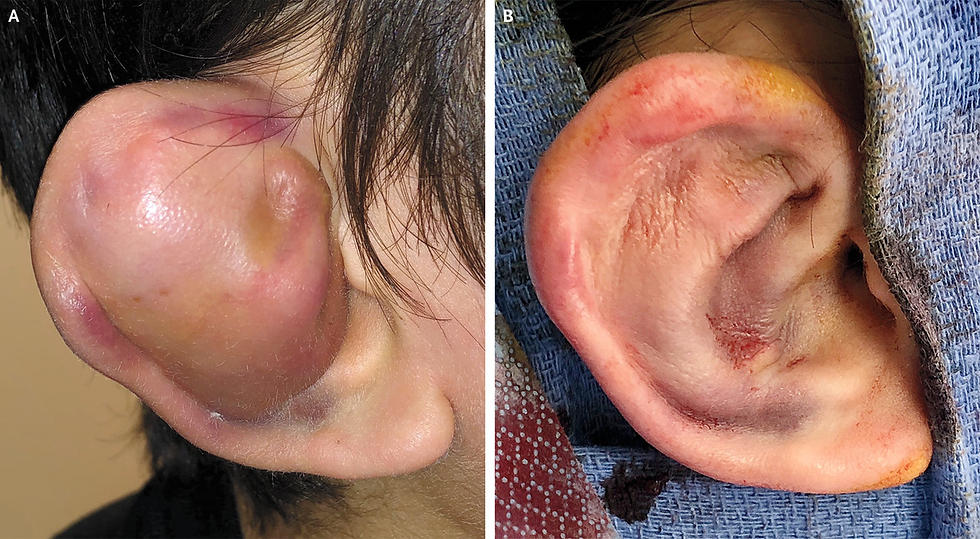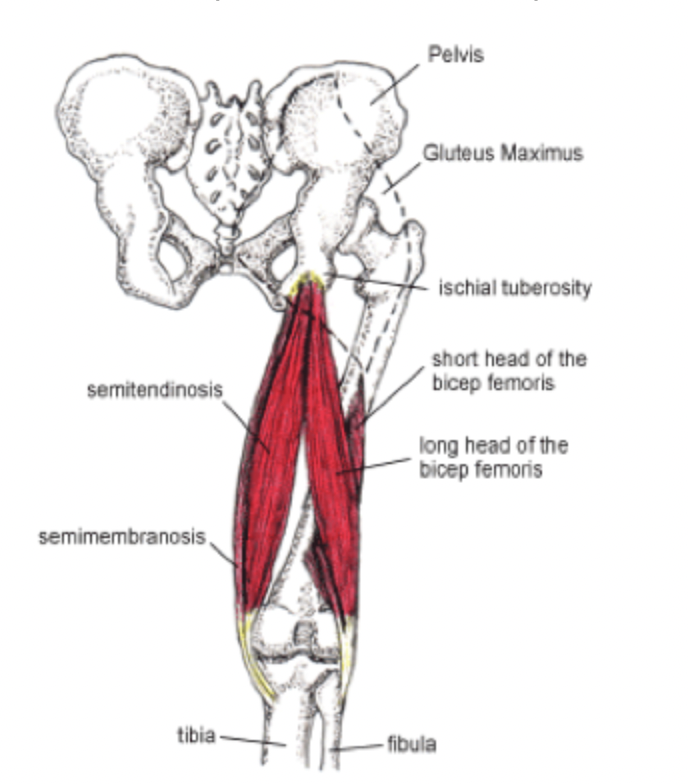Don't Let Your Ears Turn Into Cauliflower!
- golabiromtin
- Jan 5
- 3 min read
Updated: Jun 23
By Romtin G.
Before reading this article, check out our Instagram page where we'll have infographics on each article topic. They're perfect if you want a short introduction before reading the article, or if you want to get a general idea of the topic without reading the entire post. Here's the infographic in case you want to see it on our website instead: Infographic 7
Cauliflower ear is a common injury among athletes in contact sports (wrestling, boxing, mixed martial arts, etc.) when one suffers repeated trauma or a single severe blow to the ear that causes blood to collect between the skin and the cartilage due to damaged blood vessels. While it may seem like a badge of honor for athletes, its significance isn’t just aesthetic – it can cause long term damage if left untreated. In this post, we’ll explore the reasoning behind the development of such a strange condition, treatment, and prevention of this unique injury.

To start, let’s talk about the ear’s anatomy, which will help you understand why it’s so hard for it to heal on its own. The outer ear, or the pinna, is basically just elastic cartilage covered by skin; that’s why your ear is so easy to bend and twist! However, unlike most other body parts, the cartilage in our ear doesn’t have its own blood supply. Instead, it gets nutrients and oxygens through tiny blood vessels in the skin that cover it. So, when the ear is struck or compressed, the force of the impact damages the small blood vessels under the skin, causing blood to leak into the space between the cartilage and the overlying skin. Without much blood circulation, the blood doesn’t drain away easily, eventually forming a pocket of blood (hematoma) that clots and leads to permanent scarring if left untreated. The scarring often results in a lumpy, deformed appearance of the ear – hence the name "cauliflower ear.”
The main problem, as mentioned before, is not that you’re left with a deformed and unattractive ear. In some cases, the swelling is so excessive that it partially obstructs your ear canal, reducing your hearing. Over time, if the ear canal becomes partially obstructed or if there's fluid buildup in the middle ear, the ear may transmit disfigured sounds, which could cause auditory hallucinations or a constant buzzing sound (a condition known as tinnitus). Also, the hematoma in your ear is a still pool of blood, which is the perfect environment in terms of accommodating bacteria. An infection in the hematoma can lead to an abscess – a painful, pus-filled pocket that can cause further tissue damage and spread to other parts of your body. Severe cauliflower ear can even lead to tissue death (necrosis) because the lack of proper drainage means that the cartilage may not receive the oxygen and nutrients it needs, leading to irreversible physical damage that would reduce hearing and make the ear more prone to injury.
Now that you’ve heard plenty about the damage this disease can cause, it’s important to learn about treatments and prevention. The most effective treatment for early-stage cauliflower ear is simply draining the blood through a minimally invasive process known as aspiration. Your healthcare provider will use a sterile needle and syringe to remove the blood from the ear, preventing hematoma and subsequent scar tissue formation. For chronic or severe cases, your surgeon may put you under local anesthesia (you’re awake during the operation but will feel no pain) to make an incision to drain any fluid and manually remove scar tissue. They may also follow up with reconstructive surgery to reshape the ear, either by using sutures to pull the ear back in place or through cartilage grafting (taking cartilage from another part of your own body [e.g. your ribs], or from a cadaver). The best form of prevention is to not engage in activities that put your ear at risk, but there are many ways to continue doing what you love without developing this condition. During sports like wrestling, rugby, and boxing, it’s important to wear headgear or ear guards to protect the ear from direct blows. If you do end up getting injured, follow up immediately by icing your ear for 15-20 minutes to reduce swelling. If you do notice swelling, it’s important that you don’t wait for it to “settle” because time means everything in this situation! Contact your doctor immediately so that they can drain the blood before it forms into scar tissue and you join the group of athletes who have cauliflower ears!
Sources:


